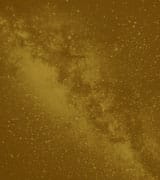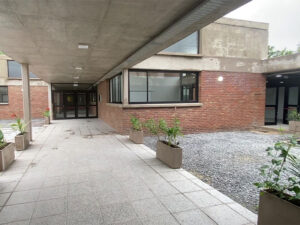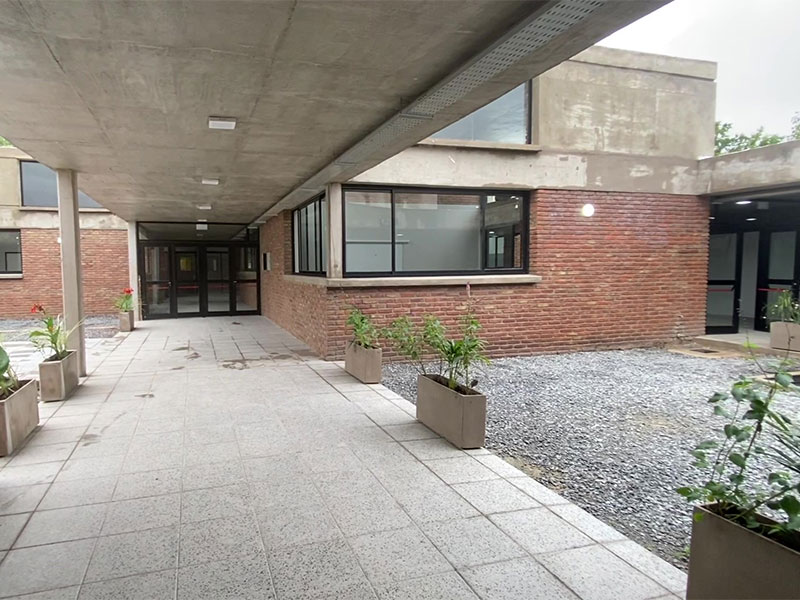Astronomical Ephemeris – November, 2021
Astronomical Ephemeris – November, 2021
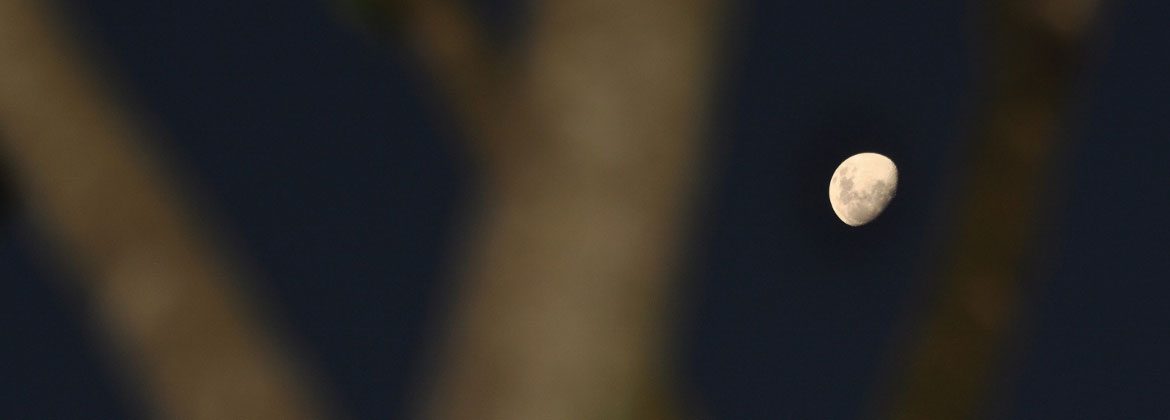
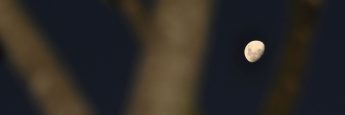
November will bring us the possibility of enjoying a meteor shower, a partial lunar eclipse and conjunctions being again starred by the Moon, Venus, Saturn and Jupiter; and all this without needing the help of any optical instrument. Our eyes will suffice.
Moon phases
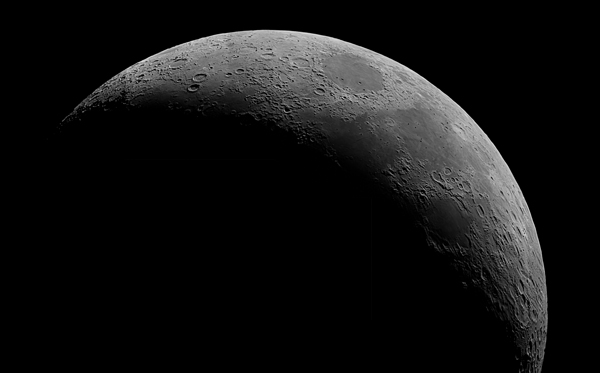
November 4 – New Moon
November 11 – First Quarter
November 19 – Full Moon
November 27 – Last Quarter
November conjunctions
In November, here on Earth, we will see the Moon apparently very close to Venus, on the 7th; to Saturn on the 10th; and finally, to Jupiter on the 11th. This means that our satellite will form a conjunction with each of them.
Dear reader, it is important for you to know that:
Although Moon and Venus, Moon and Saturn and Moon and Jupiter are apparently very close together in the sky, on the aforementioned occasions, they will not fit within the field of view of a telescope, so they can only be observed with the naked eye or with a pair of binoculars.
And the angulations and cardinal points mentioned here have the city of São Paulo/Brazil as a reference for the geographic coordinate of the observer’s position.
November 7
Conjunction between the Moon and Venus
The conjunction between the Moon and Venus, on the 7th, will become visible around 18:42 (Brasilia -3UTC), when the Moon will pass 1°06’ north of Venus.
The two celestial bodies can be seen at 41° (angle varying according to the geographic location of the observer) above the western horizon line towards the constellation Sagittarius.
At that time, the magnitude – the apparent brightness – of the Moon will be -10.8 and that of Venus will be -4.5.
We will lose visibility of the pair approximately three hours later, when it will sink below the horizon line.
Observable around the world.
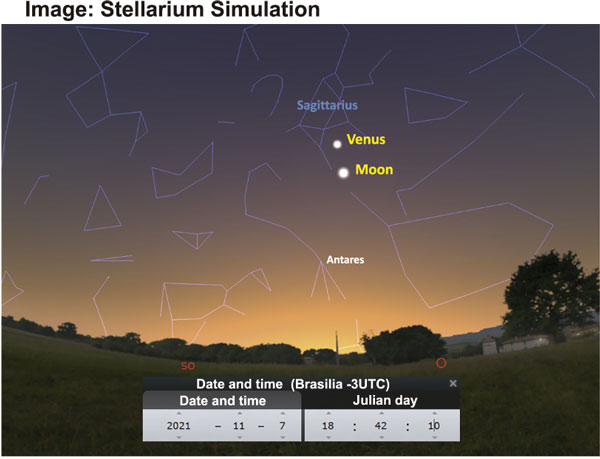
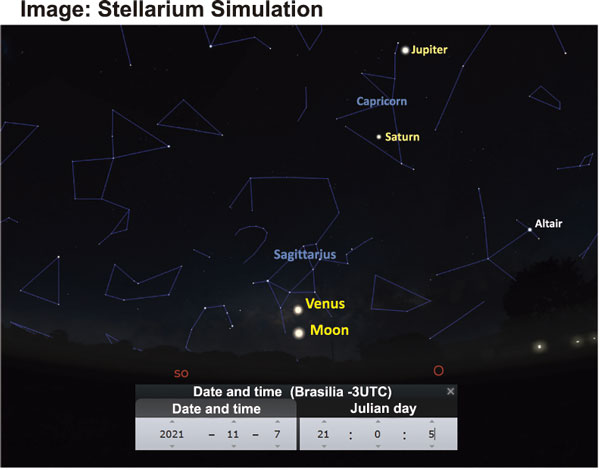
November 10
Conjunction between the Moon and Saturn
On the 10th, the Moon and Saturn will form a conjunction, when our satellite will pass 4°06’ south of Saturn.
The conjunction between the pair can be seen from 18:42 (Brasilia -3UTC), 72° above the western horizon line (angle varying according to the geographic location of the observer), in the direction of the constellation Capricorn.
On that day, the Moon will have apparent brightness, that is magnitude, of – 11.7 and Saturn of 0.4.
Around 23:50 (Brasilia -3UTC) they will sink below the horizon line, no longer being visible.
Observable around the world.
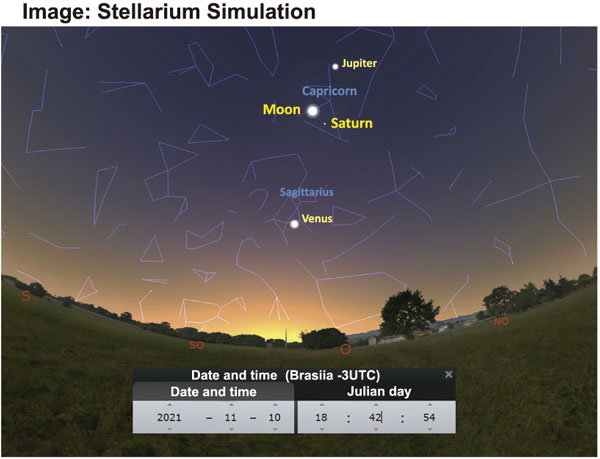
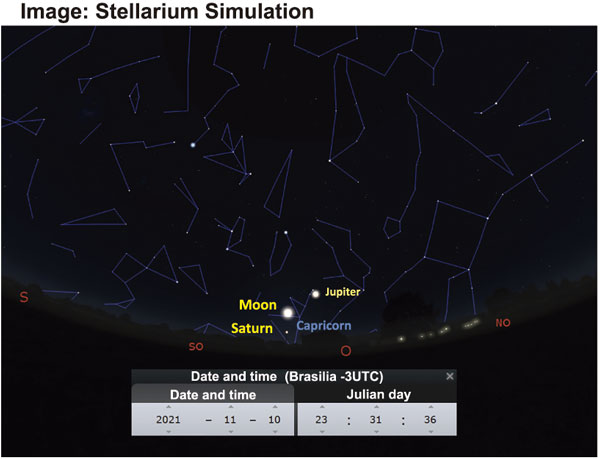
November 11
Conjunction between the Moon and Jupiter
The Moon and Jupiter, on the 11th, will form a conjunction, at which time the Moon will pass 4°21’ south of Jupiter.
This conjunction between them can be observed from 18:42 (Brasilia -3UTC), 80° above the northwest horizon line (angle varying according to the geographic location of the observer), in the direction of the constellation Capricorn.
At this time, the Moon’s brightness will be at a magnitude of -12 and Jupiter at -2.4.
They will no longer be visible from 12:45 am on November 12, when they will sink below the horizon.
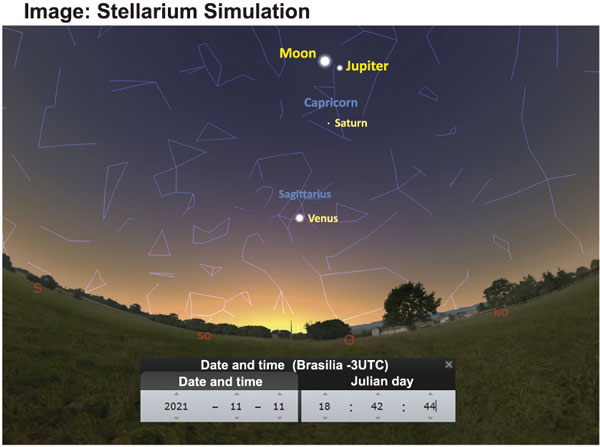
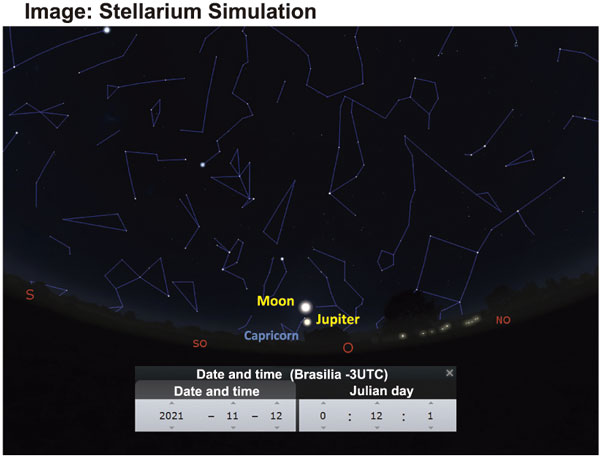
November 17
Leonidas Meteor Shower
The Leonid meteor shower is so called because its radiant – the point from which its meteors seem to originate – is located in the constellation Leo.
Associated with the Earth’s passage through the flow of solid particles left in the cosmos by comet 55P/Temple-Tuttle – called the parent object – it will be active from November 6 to 30.
Its peak – moment of greatest activity – will be on November 17, when it is expected to produce around 15 meteors per hour, assuming a perfectly dark sky, and that its radiant is situated well above the horizon line. Actually, this view will fall short of that expected, because the relatively intense brightness of the Moon, which will be two days from its full phase, will overshadow the view of the meteors.
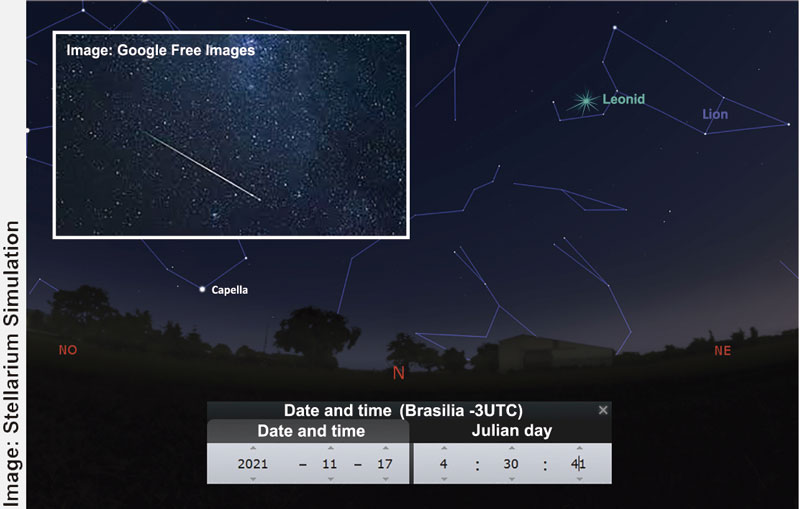
The meteors produced by this shower enter at an approximate speed of 70k/s into the Earth’s atmosphere and typically burn at an altitude of about 70 to 100 km, producing long, bright trails.
Leonid is famous for producing large storms every 33 years – the time it takes for comet Temple-Tuttle to complete one orbit around the Sun – as were recorded in 1799, 1833, 1866, and then in 1966 – that of 1899 did not materialize – and 2001, when meteors (popularly known as “shooting stars”) fell like rain – about 2,400 per hour.
Although this is not anticipated for the 2021 Leonids, we will still be able to see many meteors between November 6 and November 30, whenever their radiant is above the horizon.
A tip to better observe it is to know that its radiant point culminates (it is highest in the sky) after dawn – around 06:00 (Brasilia -3UTC); therefore, it is likely that the rain will produce its best display just before dawn, when its radiant point is highest.
Observable around the world.
November 19
Partial Lunar Eclipse
When the Sun – Earth – Moon in its full phase alignment occurs, so that the Earth passes between the Sun and the Moon obscuring the light of the solar disk and casting a shadow on its surface, lunar eclipses occur, which can be partial or total.
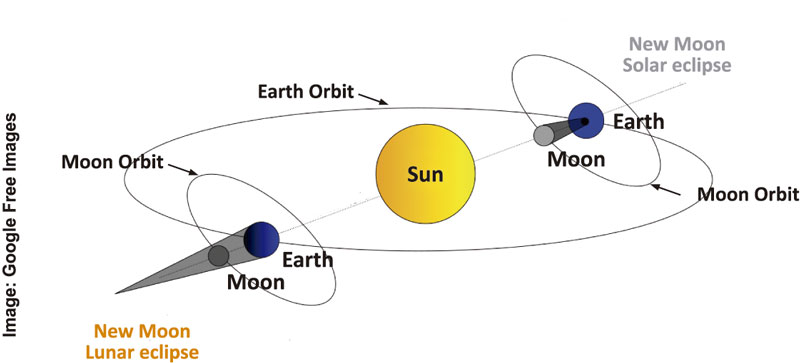
A parenthesis…
There are no lunar eclipses every month, although the Moon passes opposite the Sun in the sky whenever it reaches its full phase, because it has an orbit with an angle of inclination of 5° above the Earth’s orbital plane relative to the Sun.
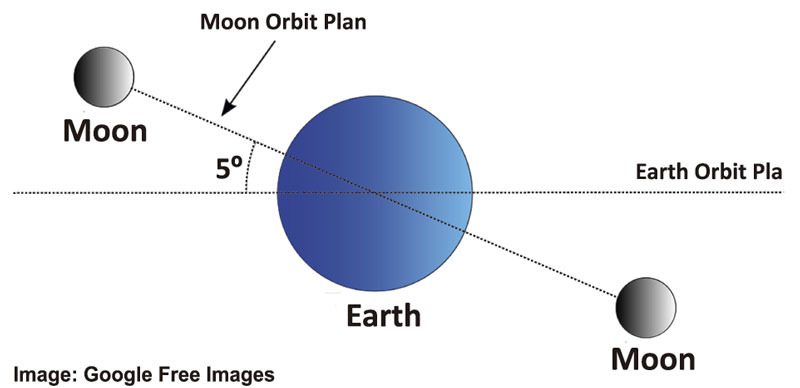
Returning…
This shadow projected by the Earth has two parts called “umbra” – a region in which there is no direct sunlight – and “penumbra” – a region in which only part of the illumination is blocked.
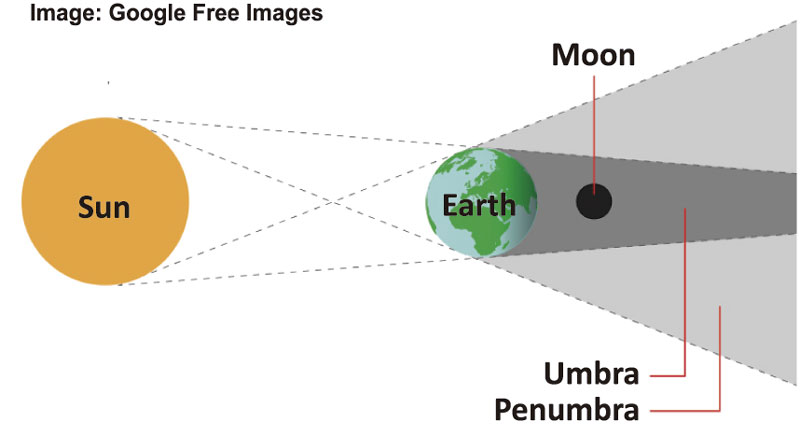
On the 19th, between 4:19 am and 7:47 am (Brasilia -3UTC), the Moon will pass through the Earth’s shadow – in the umbra region, with part of its surface obscured – creating a partial lunar eclipse that will be visible wherever the Moon is above the horizon at the moment, which includes much of the Americas, West Asia, Oceania, the Pacific Ocean, the Arctic, Australia, New Zealand and northern Europe.
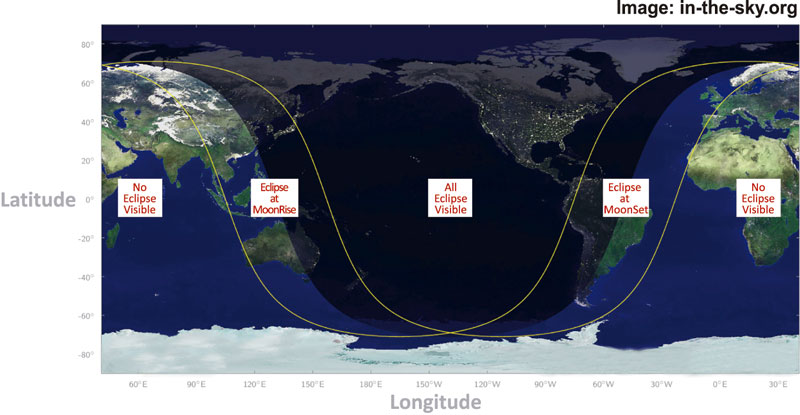
Unlike solar eclipses, which cannot be observed with the naked eye and need special filters to be observed, lunar eclipses are completely safe to look at. They can be seen with the naked eye, without the need to look through any kind of filter.
A simple pair of binoculars can give a splendid view of the Moon’s surface.
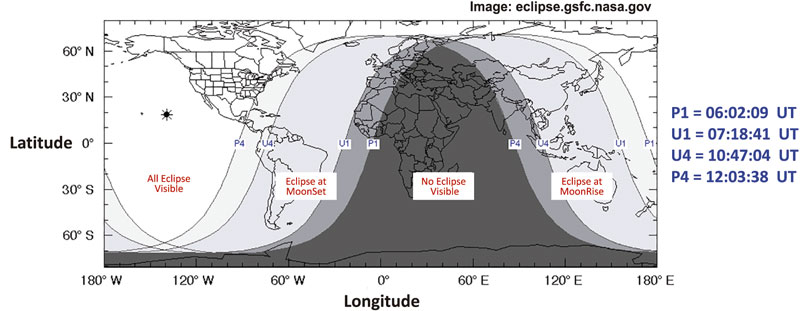
Sources: jpl.nasa.gov/calendar / solarsystem.nasa.gov / in-the-sky.org / Stellarium.org / earthsky.org / derekscope.co.uk / planetaty ephemeris – Jet Propulsion Laboratory (JPL) / seasky.org / amsmeteors.org
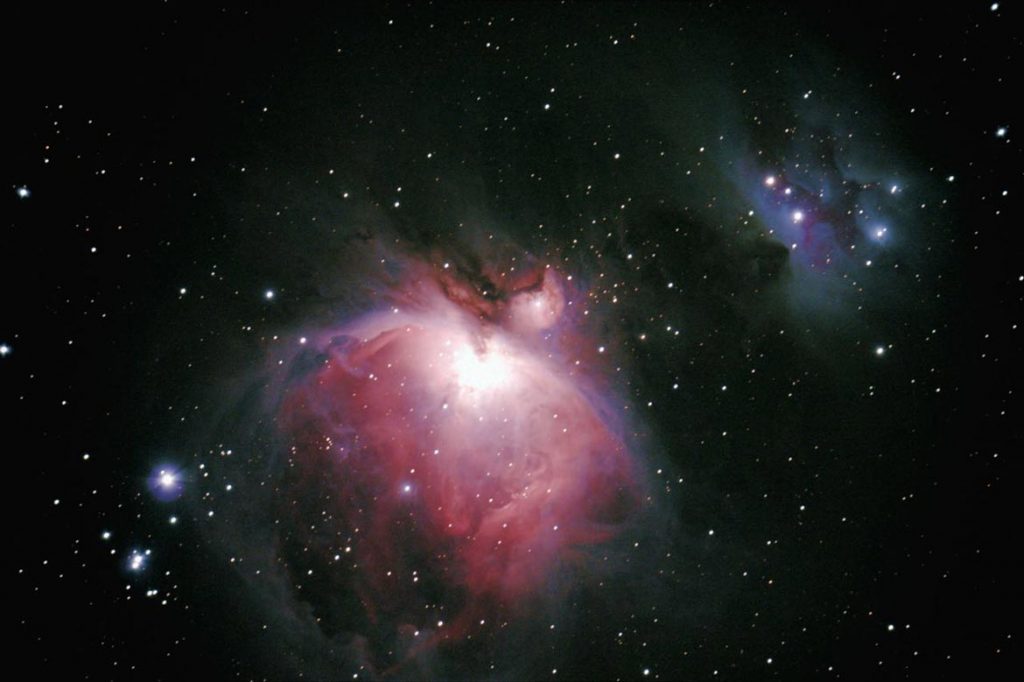
Astronomical ephemerides is a monthly calendar prepared by the Astronomy Sector, which is one of the 12 that make up the PRÓ-VIDA Laboratory Department. In the department, studies, research and scientific experiments related to various themes are developed, as well as field activities and lectures.

Astronomical ephemerides is a monthly calendar prepared by the Astronomy Sector, which is one of the 12 that make up the PRÓ-VIDA Laboratory Department. In the department, studies, research and scientific experiments related to various themes are developed, as well as field activities and lectures.

